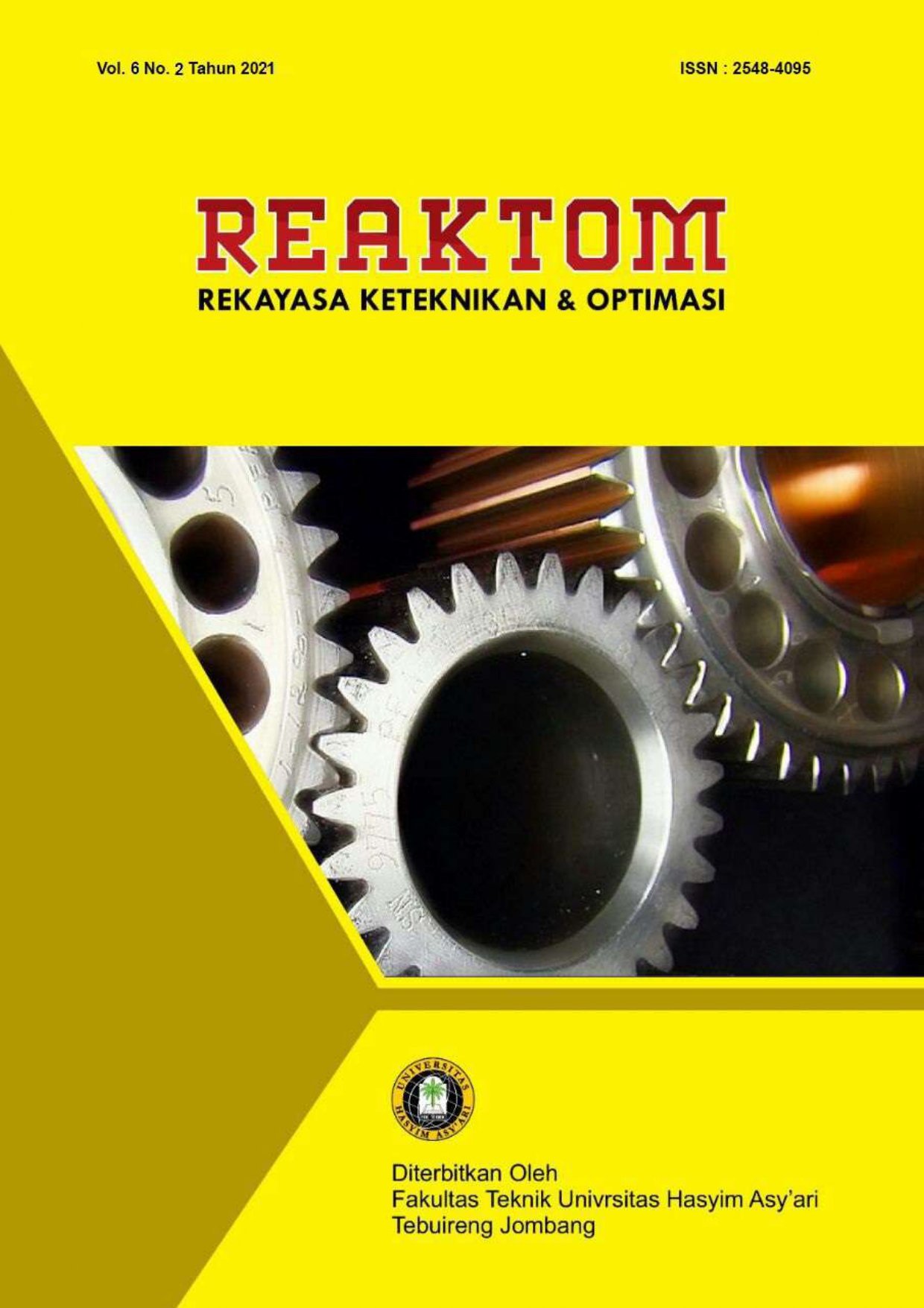Lama Pengisian Baterai Knapsack Sprayer Menggunakan Panel Surya Polycrystalline Ditinjau Dari Sudut Kemiringan 25 derajat
DOI:
https://doi.org/10.33752/reaktom.v6i2.2174Keywords:
Solar Panels, Knapsack Sprayer, Charging TimeAbstract
The progress of a country cannot be separated from the role of energy, because with the existence of advanced energy it will be able to accelerate the progress of the country itself, energy itself is divided into 2 namely fossil and renewable energy. One of the renewable energies is the use of geothermal energy which can be converted into electricity through the photovoltaic effect. Indonesia itself is a country that is crossed by the equator so that it gets a lot of heat supply. The use of solar panels can be applied to the Knapsack Sprayer as an effort to minimize the use of fossil energy which is used as the main energy for producing electrical energy. This research is to see the effect of the use of polycrystalline solar panels in terms of a predetermined angle of inclination. This type of research is experimental research by controlling the angle of inclination in this case 25 degrees. The measurement of this research uses a digital DC avometer with its own power supply which will display the amount of charging current for the Knapsack Sprayer battery. Prototype testing is carried out after making the prototype, the manufacture starts from installing the panel on the knapsack sprayer and being given a holder. The test was carried out in a few days, the results obtained were in the form of a large charging current in the solar panel system. The results of this measurement will be calculated using the charging time formula to find out how long it takes to charge the battery on a monocrystalline panel in terms of an angle of 25 degrees. Based on the results of the tests and calculations, the data in the form of battery charging current using polycrystalline panels at an angle of 25 degrees in the first test was 0.44 amperes, the second test was 0.43 amperes and the third test was 0.48 amperes. From the test results, it is calculated and produces an average charging value using polycrystalline solar panels for 10.6 hours.
Downloads
References
Johan Sainima, E. (2018). Perancangan Alat Penyemprot Hama Tanaman Tipe Knapsack Berbasis Solar Panel 20WP. Jurnal UMT, 51(1), 51.
Martawati, M. (2018). Analisis Simulasi Pengaruh Variasi Intensitas Cahaya Terhadap Daya Dari Panel Surya. Jurnal Eltek, 16(1), 125–136. https://doi.org/10.33795/eltek.v16i1.92
Nugroho, R. A., Facta, M., & Yuningtyastuti, Y. (2014). Memaksimalkan Daya Keluaran Sel Surya Dengan Menggunakan Cermin Pemantul Sinar Matahari (Reflector). Transient, 3(3), 408–414. https://ejournal3.undip.ac.id/index.php/transient/article/view/7093
Ramadhani, B. (2018). Instalasi Pembangkit Listrik Tenaga Surya Dos & Don ’ ts. Deutsche Gesellschaft für Internationale Zusammenarbeit (GIZ) GmbH.
Safitri, N., Rihayat, T., & Riskina, S. (2019). Buku teknologi photovoltaic (K. Yolanda Putri (ed.); 1 ed., Nomor July). Yayasan Puga Aceh Riset.
Sitorus, B., Tumaliang, H., & Patras, L. S. (2016). Perancangan Panel Surya Pelacak Arah Matahari Berbasis Arduino Uno. Jurnal Teknik Elektro dan Komputer, 5(3), 1–12.
Yuliarto, B. (2017). Memanen Energi Matahari (Cetakan 1). ITB.
Downloads
Published
How to Cite
Issue
Section
License
Authors who publish with this journal agree to the following terms:
- Authors retain copyright and grant the journal right of first publication with the work simultaneously licensed under a Creative Commons Attribution License that allows others to share the work with an acknowledgment of the work's authorship and initial publication in this journal.
- Authors are able to enter into separate, additional contractual arrangements for the non-exclusive distribution of the journal's published version of the work (e.g., post it to an institutional repository or publish it in a book), with an acknowledgment of its initial publication in this journal.
- Authors are permitted and encouraged to post their work online (e.g., in institutional repositories or on their website) prior to and during the submission process, as it can lead to productive exchanges, as well as earlier and greater citation of published work (See The Effect of Open Access).


